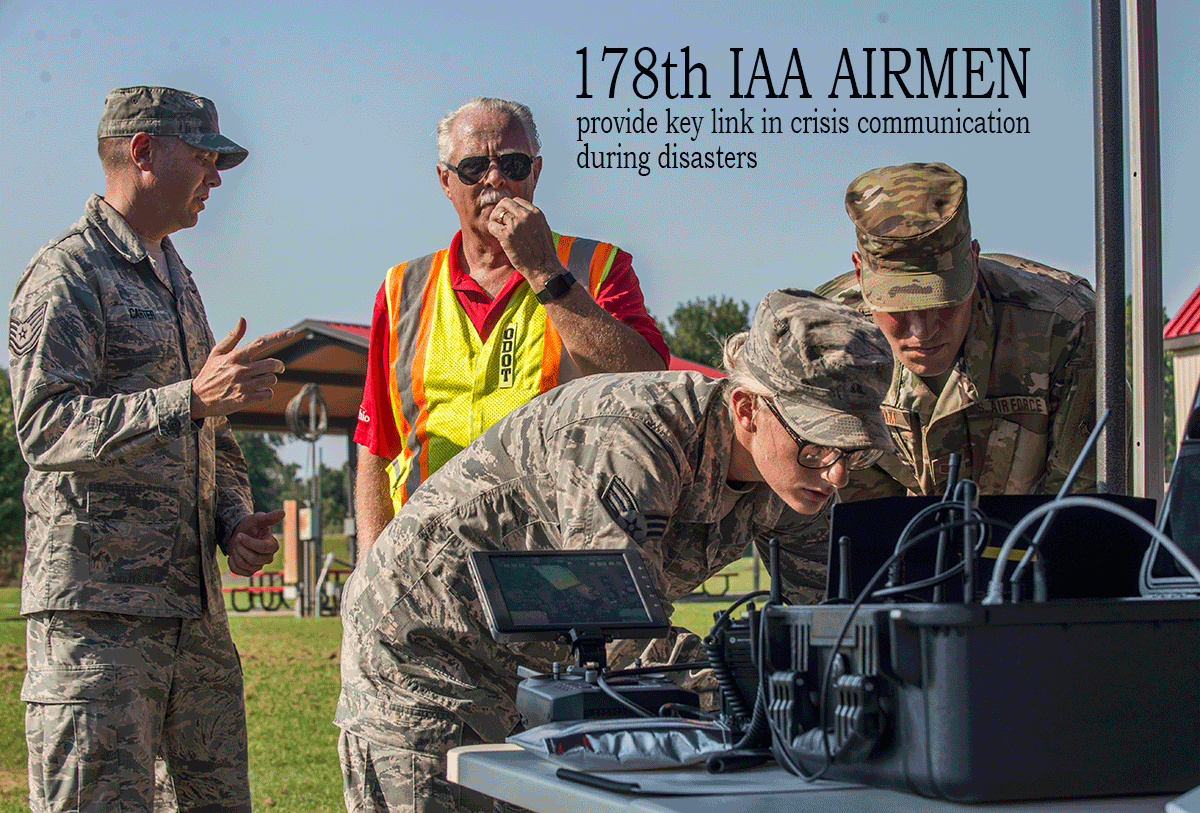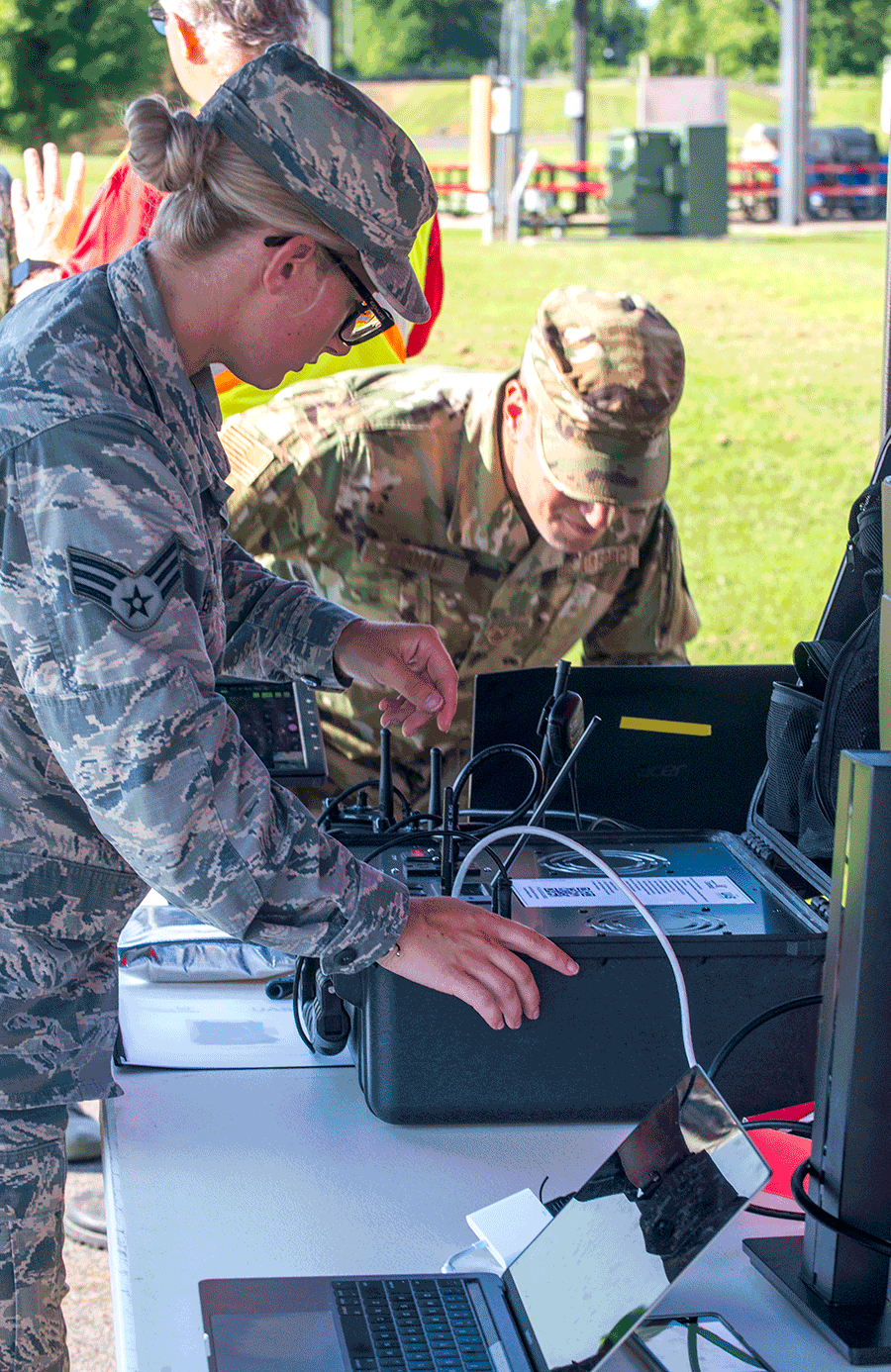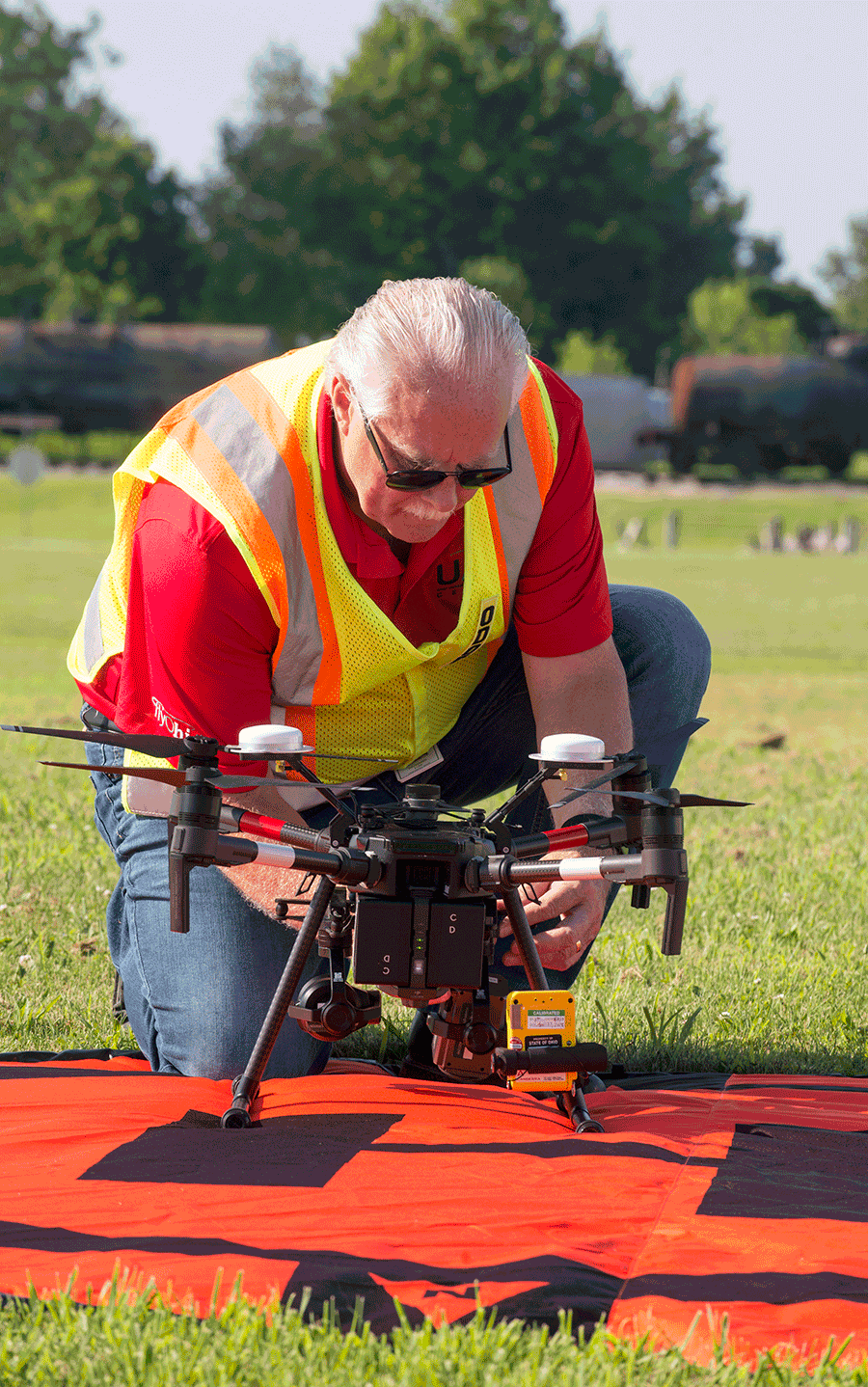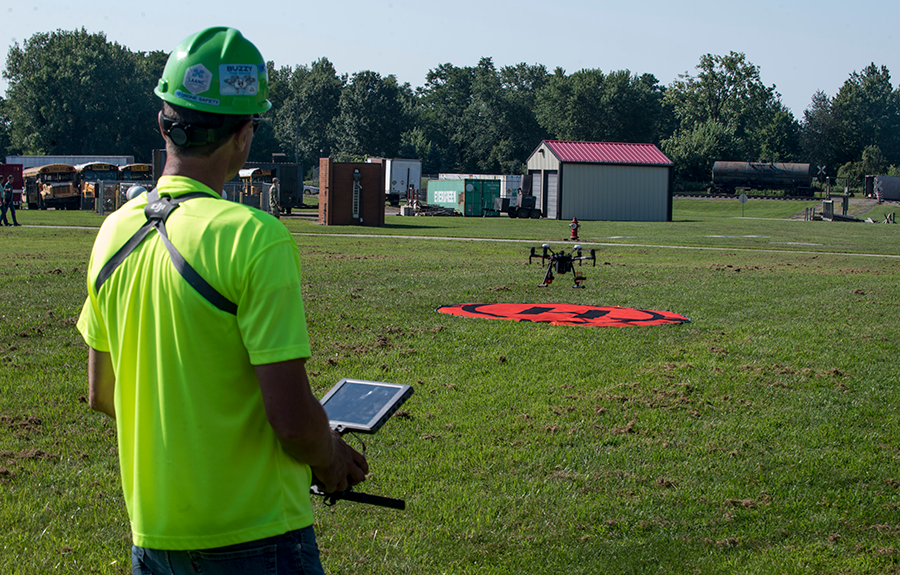178th IAA Airmen provide key link in crisis communication during disasters
Story by Staff Sgt. Michael L. Carden, Ohio National Guard Public Affairs
COLUMBUS, Ohio (08/16/19)
The drone was slowly lowered into position, its rotor blades causing dust to swirl as it hovered over a train crash. The drone’s operator from the Ohio Department of Transportation, well back from the scene, maneuvered the craft so that its camera could get a clear look into the large box truck wedged between two train cars. The truck had been carrying hazardous chemicals and the first responders needed all the information they could get to handle the situation.
Sixty miles away, analysts at the 178th Wing in Springfield, Ohio were focused on their monitors, watching a live feed of the drone footage, providing direction to the drone operator. Their expertise would guide the actions of the incident commander, potentially saving lives. Thankfully, on this day, the disaster was only a training exercise; no one was actually in harm’s way.
The linking element between the first responders and the analyst, are the members of the 178th Incident Awareness and Assessment forward mobile team. They provide the technical skills and capabilities that can connect various local and state agencies into the Domestic Operations Awareness and Assessment Response Tool (DAART), a system developed to provide both civil and military first responders the capability to process and share situational awareness information.
“We are one team, one fight,” said Senior Airman Meredith Higgins, an analyst with the 178th IAA. “We all have to come together. My role is important because we are active at the incident and are able to relay the important information.” The information that the IAA forward mobile team feeds into the DAART system can be analyzed and accessed by responding agencies of all levels, such as local police and fire departments, the Ohio and Federal Emergency Management Agencies, other states’ National Guards and U.S. Northern Command.
“We are collecting information from ODOT (Ohio Department of Transportation), their drone feed, and we are linking it to our server where our team back on base (is) able to pick up that information to look at the incident that happened,” Higgins said. “Our imagery analysts there are able to call out, and give us exact information, of how many train carts or what chemicals were spilled.”
Keeping all the engaged first responders in the loop means better coordination and faster responses. “The more you can see, the more people have the capability of providing more resources on time,” said Richard Fox, with the Ohio Department of Transportation Unmanned Aerial Systems Center. “We have the capability with our equipment to transmit the live feed from the drones and they transferred it into your DAART system so it’s deployed statewide. That situational awareness is invaluable.”
From connecting cables, configuring communication relays, to providing directions and guidance, the members of the 178th IAA team do everything they can to keep everyone on the same page.
“We make sure all the communication systems are right, the drone is getting the proper direction, and what is important for our commander to see or what our commander needs,” Higgins said. “We are the cords between the incident that is happening real-world, right now and our commander back on base.”



